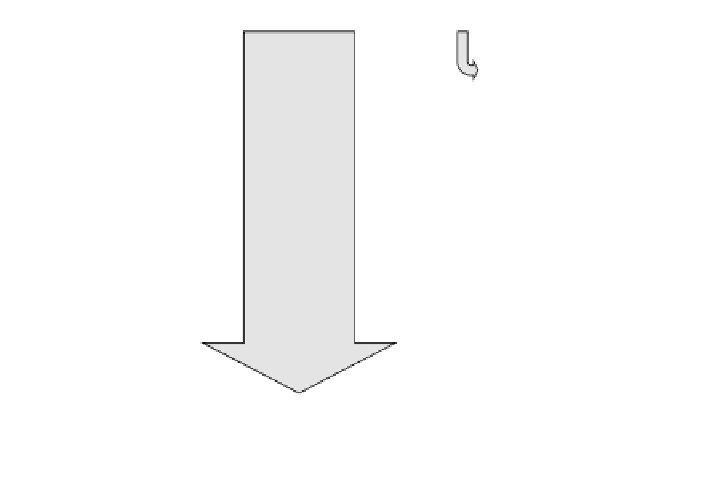Environmental Engineering Reference
In-Depth Information
fuel 100 %
engine radiation
1 %
exhaust gas
18 %
cooling
8 %
steam for
turbo generator
11 %
heating
9 %
steam for
other users
1 %
shaft output
52 %
Fig. 11.5
Dissipation of energy in a slow speed marine diesel enginediesel engine
pre-mixing fuel
mixing fuel and air intensively
pre-evaporating fuel
improving the uniformity of
fuel injection
avoiding incomplete
(not stoichiometric) burning
future combustion technology
changing the time that gases
stay in the combustion chamber
by variable spin formation and
recirculation
adapting after-reaction zones in
the combustion chamber
Fig. 11.6
Improvements of future injection technology
11.5.3 Improving Operation
On average, a slow speed two-stroke marine diesel engine converts more than 50%
of the chemical and thermal energy to mechanical work. With the slow speed of
the piston, the combustion process is more complete than in fast speed four-stroke
engines. Theoretically more than 60% thermal efficiency would be possible, but a
higher heat recuperation rate is not yet possible. The efficiency depends on friction
losses and recuperation of exhaust gases (see Fig.
11.5
)[
39
].
Further improving common rail injection efficiency for large two-stroke engines
is one of the most important technological tasks. In common rail systems, the
pressure in the fuel rail is up to 1,000 9 10
5
Pa (20.89 9 10
5
lbf ft
-2
or 14,504 psi)
and the valve pressure is up to 200 9 10
5
Pa (4.18 9 10
5
lbf ft
-2
or 2,901 psi) [
40
].






Search WWH ::

Custom Search